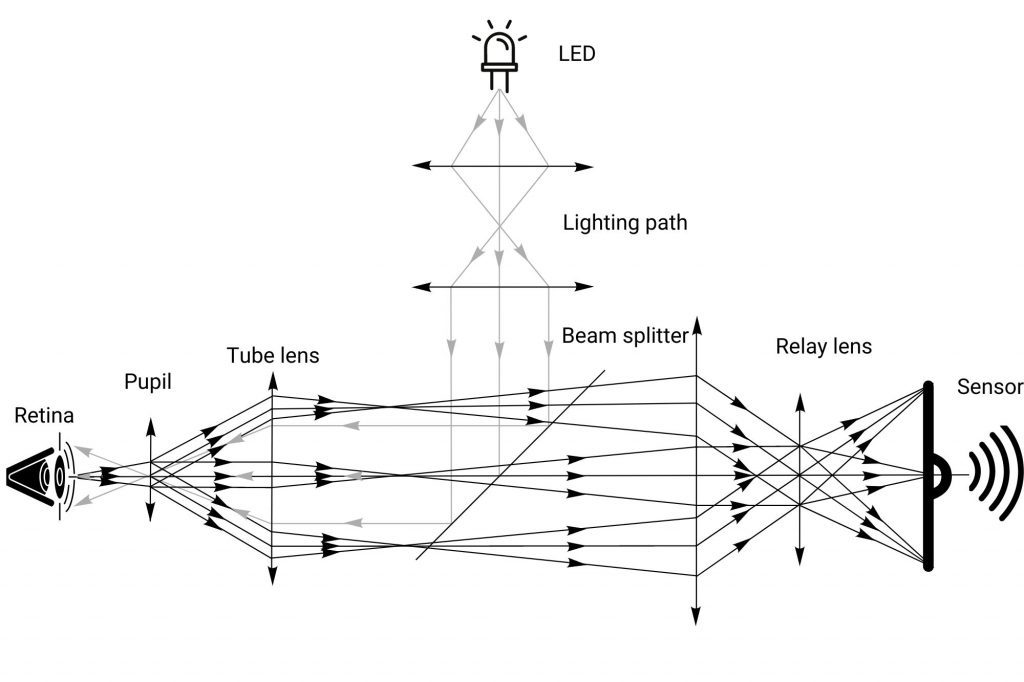Optical Coherence Tomography (OCT) is a non-invasive medical imaging technique that uses light to capture high-resolution, cross-sectional images of biological tissues. OCT technology is based on the principle of low-coherence interferometry. A laser source emits a light wave which is divided into two light beams by a beamsplitter: one beam (i.e., the optical beam) is directed on the target tissue and the scattered back-reflected light interferes with the second light beam (i.e. reference beam). The resulting interference patterns are analyzed and used to reconstruct the cross-sectional images.
Fundus scanner schematic
How OCT can be used?
OCT can be used to image various types of tissues including the eye, skin, and cardiovascular system. In ophthalmology, it is commonly used to image the retina and diagnose retinal diseases such as macular degeneration and glaucoma. In cardiology, it is used to image the coronary arteries and detect plaque build-up, which can lead to heart disease.
OCT offers several advantages over other imaging modalities, including its non-invasive nature, high resolution, and real-time imaging capabilities. It has become an important tool in medical research and clinical practice.
Optical Coherence Tomography (OCT) has several impacts on our daily life:
- Improved Diagnosis and Treatment: OCT is a powerful tool for diagnosing and monitoring various medical conditions, including eye diseases such as macular degeneration, diabetic retinopathy, and glaucoma. It can also be used to detect early signs of heart disease by imaging the coronary arteries. Early detection and treatment of these conditions can lead to better outcomes and improved quality of life.
- Better Surgical Outcomes: OCT is increasingly being used during surgical procedures, especially in ophthalmology. It provides real-time imaging of the surgical site, allowing surgeons to make precise incisions and ensure accurate placement of implants, resulting in better surgical outcomes.
- Faster and Safer Procedures: OCT is a non-invasive imaging technique that does not involve ionizing radiation, making it safer than other imaging modalities such as X-rays or CT scans. Additionally, it provides high-resolution images in real-time, allowing for faster and more efficient procedures.
- Advancements in Research: OCT has contributed significantly to medical research, providing valuable insights into the structure and function of biological tissues. This knowledge has led to the development of new treatments and therapies for various medical conditions, ultimately improving our overall health and well-being.
Avantier Inc. offers custom imaging solutions along with manufacturing services for the high quality optical components that are used in OCT instruments including dichroic mirrors, filters, beamsplitters, collimation lenses, scan lenses, objective lenses, etc.
Please contact us if you’d like to schedule a free consultation or request for quote on your next project.
For other articles on OCT, please click here
Revolutionizing 3D Imaging in Research and Medical Diagnostics : OCT Part 2
Advancements in Non-Destructive Testing : OCT Part 3


